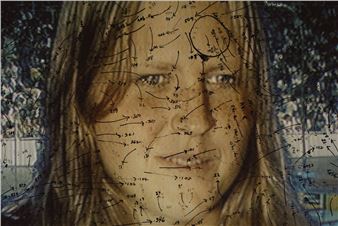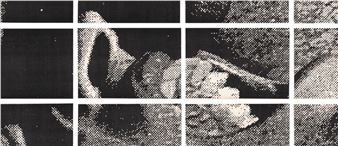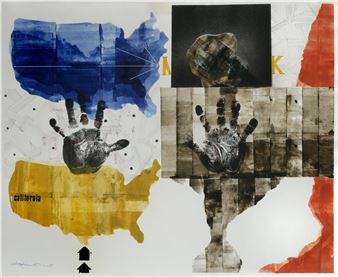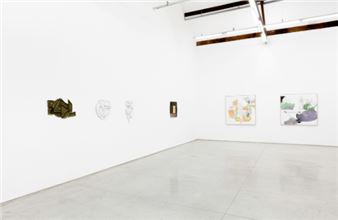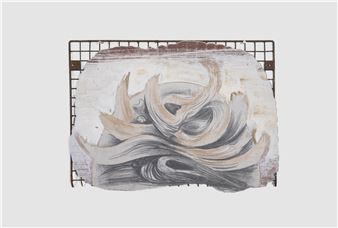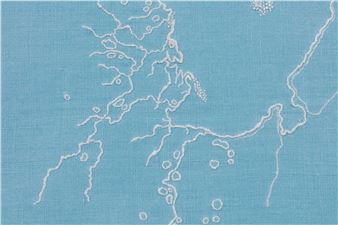Coletiva: Together, Apollo and Dionysus
For centuries, the world of art has been at the mercy of a bipolar tension between two extremes, which Aby Warburg defined as “that of magical-religious practice and that of mathematical contemplation”1, a tension that seemed embedded in western civilization. In other words, this bipolarity resides between the Dionysian and Apollonian foundations, between irrational drives, disorder, instability and fugacity on the one hand, and the quest for reason, balance, clarity and harmony on the other.
The Renaissance and Illuminism, for instance, adopted the myth of Apollo as a patron for their engagement with nationalism, while during the Baroque and Romantic periods there was a greater affinity with Dionysus, with vital, orgiastic, licentious or lush representations.
For Nietzsche, Apollo and Dionysus were the original prototypes of art, but from his view and forward, were now understood as complementary poles of the same essence. After all, Nietzsche was the first one to herald the emergence of Dionysian forces even in the heart of Apollonian symmetry and equilibrium.
Contemporary art, in a Nietzschean revival, seems to have finally dissolved this dichotomy that many see as a chronic and secular schizophrenia, making Dionysian disorder and rapture compatible with the moderation and objectivity of the Apollonian model.
This exhibition intends nothing if not to highlight the synergy that burgeons from the complicity between pulsion and order, sensory experience and cogito, the organized world and pleasure, in the works of its artists.
Angelo Venosa, Antonio Dias, Daniel Senise, FГЎbio Miguez, JosГ© Damasceno, JosГ© Resende, Kilian Glasner, Laura Vinci, Marcos Chaves, Paulo Pasta and Paulo Vivacqua combine their refined sense of form with an animistic energy that vibrates above or below formality, undoing but also recognizing the powerful force of this polarity. This is the energy behind the vitality of their works, the supreme mechanism that makes control and discipline mere agents of a fluctuating and admirable world.
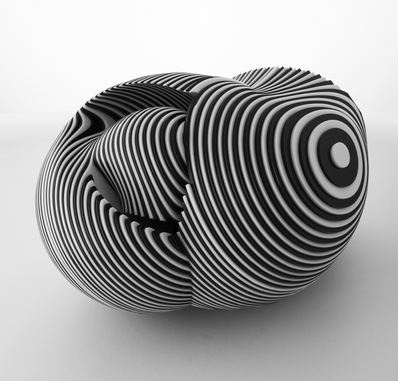
Recommended for you
For centuries, the world of art has been at the mercy of a bipolar tension between two extremes, which Aby Warburg defined as “that of magical-religious practice and that of mathematical contemplation”1, a tension that seemed embedded in western civilization. In other words, this bipolarity resides between the Dionysian and Apollonian foundations, between irrational drives, disorder, instability and fugacity on the one hand, and the quest for reason, balance, clarity and harmony on the other.
The Renaissance and Illuminism, for instance, adopted the myth of Apollo as a patron for their engagement with nationalism, while during the Baroque and Romantic periods there was a greater affinity with Dionysus, with vital, orgiastic, licentious or lush representations.
For Nietzsche, Apollo and Dionysus were the original prototypes of art, but from his view and forward, were now understood as complementary poles of the same essence. After all, Nietzsche was the first one to herald the emergence of Dionysian forces even in the heart of Apollonian symmetry and equilibrium.
Contemporary art, in a Nietzschean revival, seems to have finally dissolved this dichotomy that many see as a chronic and secular schizophrenia, making Dionysian disorder and rapture compatible with the moderation and objectivity of the Apollonian model.
This exhibition intends nothing if not to highlight the synergy that burgeons from the complicity between pulsion and order, sensory experience and cogito, the organized world and pleasure, in the works of its artists.
Angelo Venosa, Antonio Dias, Daniel Senise, FГЎbio Miguez, JosГ© Damasceno, JosГ© Resende, Kilian Glasner, Laura Vinci, Marcos Chaves, Paulo Pasta and Paulo Vivacqua combine their refined sense of form with an animistic energy that vibrates above or below formality, undoing but also recognizing the powerful force of this polarity. This is the energy behind the vitality of their works, the supreme mechanism that makes control and discipline mere agents of a fluctuating and admirable world.

 ARTISTS
ARTISTS








